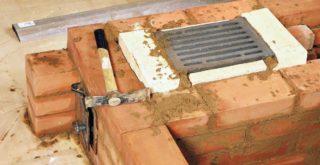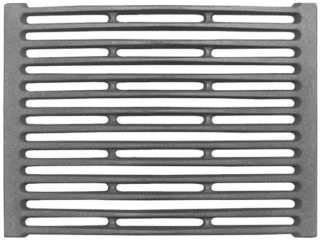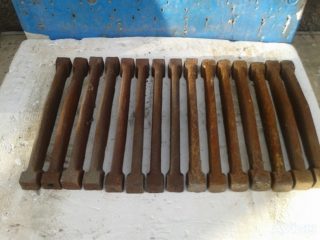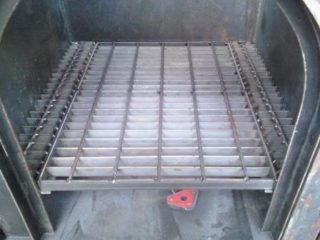The designs of solid fuel fired heaters are constantly changing and improving. The installation of new parts, the addition of components and mechanisms, which allows to achieve greater productivity and efficiency of thermal devices. The grate for the furnace is that part that cannot be dispensed with in any design, regardless of its type and size. The product can be purchased in the distribution network or, having the tools and skills, made independently.
Varieties of grates for the furnace
Despite its narrow functionality, the grid-irons for the stove differ in several directions. The raw material for the manufacture of parts is iron with a certain carbon content, which makes it resistant to high temperatures. Cast iron is the most common, less commonly used alloys of heat-resistant steel.
Since solid fuel have various designs, shapes and sizes, ash pans for the furnace are characterized by a variety of manufacturing options.
The following product categories can be distinguished:
- Whole. They are monolithic parts obtained by forging or casting. It is impossible to disassemble them, there is only the possibility of an exact fit to a specific installation location.
- Typesetting. The presence of locking joints on the parts makes it possible to assemble a grate of the desired shape and size for almost any firebox.
- Motionless. After installation in the combustion chamber, they occupy a fixed position, which cannot be changed if circumstances so require.
- Movable. Products can change the position in the space for cleaning, some models have the function of adjusting the width of the gaps between the crossbars.
Thanks to a wide range of grate grates for the furnace, you can equip a boiler of any type - for home and garden, direct and long burning.
The main functions of the grate
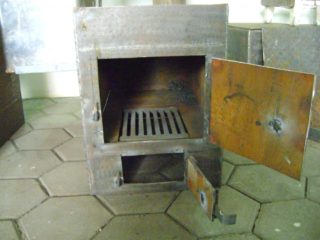
Any boiler is a design where each part performs a specific task, ensuring the smooth operation of the entire device as a whole.
Grates in the furnace perform the following functions:
- Placement of fuel - coal, firewood, briquettes, and other combustible items. Air flows through the blower, providing the oxygen necessary for the thermal reaction.
- Removing ash and ash. As the loaded material burns out, it goes into a powder state and wakes up through the grates. Fuel settles on the surface of the metal, oxygen flow improves to it. Free space for loading the next portion of fuel.
The efficiency of the boiler depends on the design of the gratings, the right choice of metal for its manufacture ensures the durability of the device.
Selection recommendations
When choosing a grate for a boiler, it is necessary to consider what type of fuel will be used in the work. Cast iron grate for the furnace have different dimensions, but the main criterion is the size of the miscalculation in the grate. It determines the amount of waste that will fall out of the furnace through them.
Recommended clearance:
- for coal - 30x300 mm or 28x205 mm;
- for firewood and briquettes - 140x115 mm or 330x250 mm.
The optimal ratio of the area of the gaps and gratings is 1: 1. Deviations in one direction or another lead to a decrease in the efficiency of the device.
Cast iron is more resistant to heat, but is brittle, it is better to use it under coal. It is impossible to break alloy products, but they can melt from excessively high temperatures. The best solution for them is the use of briquettes and firewood.
Specifications
Depending on the type of fuel used and the design of the boiler, the grate is made of monolithic parts or hollow pipes. Recent models include air cooling, which reduces the likelihood of molten metal. The shape and size correspond to the furnace of the device and the configuration of the door through which they must pass during installation.
Grates of this type can be installed in furnaces:
- Tiled. They are a rectangular product with parallel crossbars. They are universal because they differ in different intervals for all types of fuel.
- Basket. Volumetric configuration products that are efficient but difficult to maintain.
- Beam. They are typesetting parts from which you can assemble grates of any size and configuration. They are used in the independent manufacture of the boiler for the assembly of non-standard gratings.
Choosing the right grate is as important as the chimney, gate valve and blower. In the manufacture of the boiler, every detail is important.
Installation of grates in the oven
It is not difficult to install the grate in the oven, but this process has its own nuances that must be taken into account:
- Metal expands when heated. On each side there should be a gap of at least 5 mm to the walls of the boiler.
- The step for laying the grill should be made below the edge of the door by 10-12 cm so that the coals do not fall out of the furnace when fully loaded.
- The grate should not be built into the furnace, as this is fraught with its deformation. To prevent the product from moving on the stops, it is better to put coarse sand in the gap.
In order not to injure your hands, put the grate in construction gloves.
DIY grate making
To make the grate for the stove with your own hands, you will need such tools and materials:
- welding machine;
- Bulgarian;
- square;
- roulette;
- clamps;
- core.
As a material for the manufacture, you can use reinforcement or a corner. Both options are equally effective, but in the case of a corner there will be difficulties with cleaning the recesses.
The lattice assembly procedure is the same for all types of rolled steel:
- Take measurements, draw up a diagram taking into account the openings for thermal deformation.
- Make stops. After stripping the metal, weld them to the inner walls of the furnace.
- Saw the sides of the grate. Then cut the crossbars of the desired length.
- If the firebox has a round or oval cross-section, bend the segments to fill the openings.
- Secure the sidewalls and crossbars with clamps. Weld the parts together.
It remains to install the finished grate in place and conduct a control firebox. If you plan to use all available types of fuel, it is advisable to make replaceable grates for coal and wood.
Popular models
The most popular grate models that are on sale:
- RX PISLA;
- NTT;
- CROC;
- Impex Group.
These products are resistant to high temperatures and corrosion, strength and durability.
